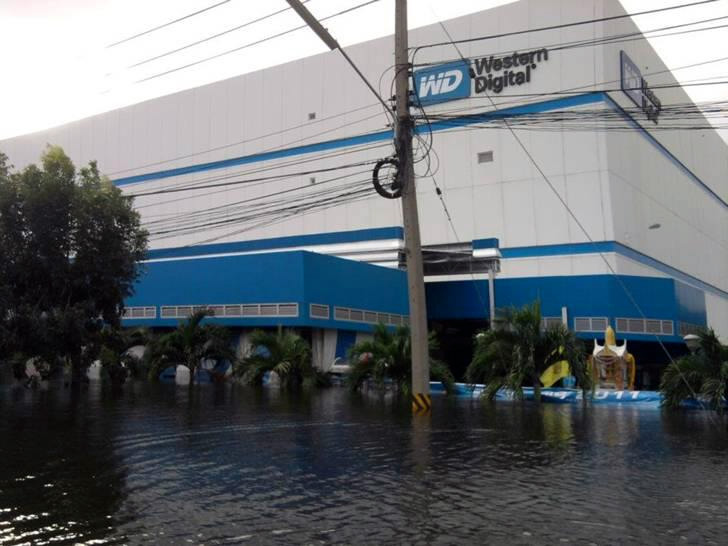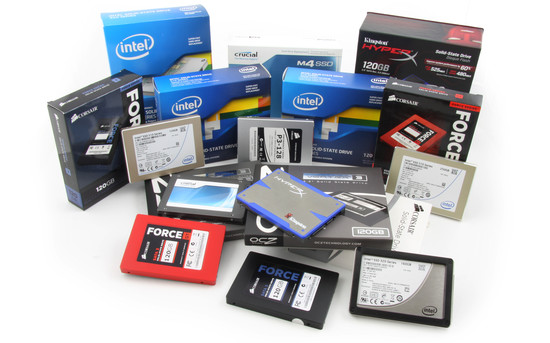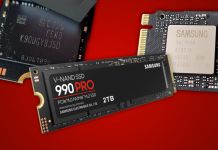Harddrive prices have gone up fast over the last few weeks and are up to 2-3 times higher than earlier this fall, a number that can get even worse. The heavy floods in Thailand have put factories under water, which is confirmed by pictures from WD’s plants.
That harddrive prices have gone up lately can’t have evaded many, and in just 3-4 weeks the average prices have increased by up to 200%. Price lists have been rewritten daily over the last week in most stores, this after reports from distributors and manufacturers that are powerless before the forces of nature, and weather.
The company suffering the most is market leader Western Digital that ships near 50% of all mechanical harddrives in retail. New photos from one of the plants in Thailand show with utmost clarity the cause of the problem with availability – and prices. The images from WD’s plant show meter-high levels of water that makes it impossible for the company to continue production. The level of water has been this high for over a week and the plant that supplies 60% of WD’s total harddrive manufacturing is not the only one suffering.
According to the reports the total harddrive deliveries are down with 28% globally. Even if WD’s competitors Seagate and Toshiba are not suffering as bad, large volumes of their production is being allocated to cover the demand in the OEM segment, due to the lack of WD models. This has substantial effects on the component market where availability and prices are looking grim.
No new harddrive deliveries until 2012
A quick check local price comparison services shows that most stores are sold out and that new delivery dates are uncertain.
“With the current situation and the available information the availability of harddrives, both internal and external, will be low for another 3-6 months. The prices of harddrive have gone up every day for the last two weeks. You can expect prices to continue to go up the coming month. Thereafter prices should stabilize and high above average for another couple of months. The tragic flood in Thailand will most likely also affect the prices of PCs in mainly Q1.” says Johan Malmborg, head buyer at JME Data
The situation is largely due to the development of the floods, but local stores are expecting any large deliveries until next year. The harddrives that already are in the channels are those that will be sold in 2011, says Olof Geelnard, computer store manager at Komplett.se;
“According to current statements there will be no more deliveries to distributors this year. All drives that are produced and are available in storage are allocated to PC producers like DELL, HP, Acer, Apple etc. This goes for all mechanical drives of all sizes. Prices are set after supply and demand, and after the storages are emptied at the retailers prices are going up on the few that are still available for sale.
Most distributors that have a couple of disks left have stopped all sales and removed them from their lists while waiting for more information and stability on the market.” says Olof Geelnard
This means that prices can go up even further as the stock goes dry at the distributors.
We made a quick comparison from an order we made on October 3rd 2011. The a 2TB WD Green drive cost 60€, the same harddrive costs 180€, November 2nd 2011.
Those who are in an emergency will just have to accept the situation, or look for used drives. The latter is a bit tricky though, with wear and tear and out-of-date warranties.
The upside of it all – SSD hotter than ever
For other computer builders the Winter of 2011 looks like the perfect opportunity to – if you haven’t already – pick up an SSD. An SSD can’t replace a mechanical in gigabyte per dollar, not even with today’s prices. But if you are building a computer we would recommend using an SSD with at least 120GB for the system partition and revive some older mechanical drive for the storage partition or simply hold off until next year when it might be time to complete with a mechanical drives as prices have been stabilized.
A Solid State Drive is built from flash memory circuits and is overall more expensive per gigabyte. Even if harddrive prices have increased with 2-3 fold, the price per gigabyte on the above mentioned 2TB drive is still 0,1 euro, which can’t compare to the 1,25 euro per gigabyte that the cheaper 120GB performance SSD models cost.
An SSD are many times faster during regular use with immediate response times, completely silent operation and extremely low energy consumption. For a system partition with operating system, program and games an SSD is the obvious choice and the given recommendation by our storage expert Gustav Gager, and right now the motivation to pick one over a mechanical drive is greater than ever before.



















